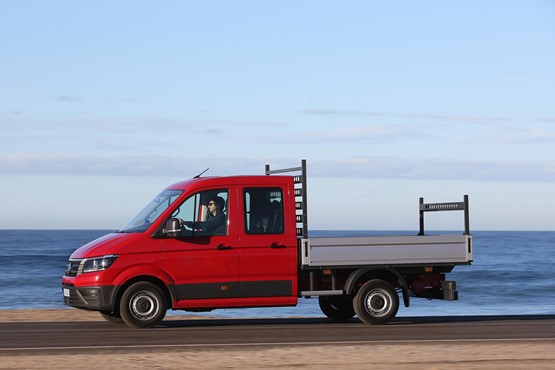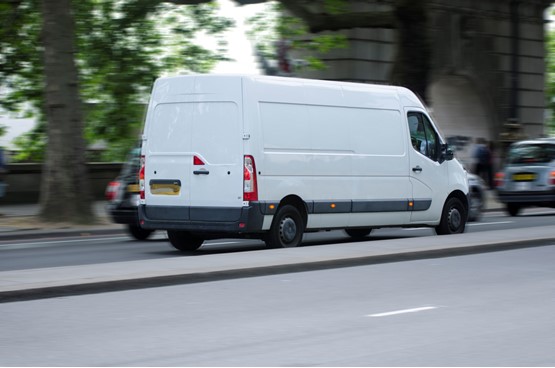February is usually one of the quietest months for sales, but this year the picture looks different. Dean Bowkett reports.
After a 4.2% drop in January, new light commercial vehicle (LCV) values rose 6.4% in February 2018 compared with the same period in 2017.
February is traditionally one of the two quietest months of the year, the other being August. Both months generally only account for 4% each of the full year LCV sales.
However, February 2018 was the best second month of the year for a decade and this leaves the year-to-date results almost flat at -0.1%.
How sustainable any recovery will be is open to debate, but the more positive messages coming from the Brexit negotiations may partly explain why the Confederation of British Industry’s (CBI’s) Business Optimism Index rose to +13 for the first quarter of 2018 compared to -11 in quarter 4, 2017.
According to the CBI’s latest quarterly trends survey of small-to-medium-sized enterprises (SMEs), optimism among SMEs is improving at the fastest pace since April 2014, with total new orders growing at the strongest rate since April 1995.
Growth is reportedly underpinned by both domestic and export orders picking up and the CBI reports that survey respondents are expecting this to continue throughout the next quarter.
With consumer confidence also at its highest level for 10 months in March 2018 and inflation easing back, some businesses – particularly those around London – may see the current climate as the best time to replace their ageing (pre-Euro 4) vans with Euro 6 vehicles to avoid the additional £10 per day toxicity charge (T-charge) to enter the capital.
Dependent on the frequency of visits into the chargeable zone, the payback from moving to a newer Euro 6-compliant van could make this switch self-funding giving a boost to what the Society of Motor Manufacturers and Traders (SMMT) had previously expected to be a lacklustre 2018 new LCV market.
We also have the Ultra-Low Emission Zone (ULEZ) starting in London on April 8, 2019.

The ULEZ will operate 24 hours a day, seven days a week and, with other cities talking about emissions tariffs, swapping that pre-Euro 6 van before we get to Brexit could be a good strategic move.
Shoreham Vehicle Auctions (SVA) managing director Alex Wright also believes the rollout of Clean Air Zones (CAZs)across 33 local authorities from 2019 will increase demand for new and used Euro 6 LCVs.
Wright does add a note of caution to those holding out for an increase in supply to drive down prices, saying his main concern is that “new Euro 6 vans will become increasingly difficult to source as manufacturers move their production (focus) into the left-hand drive economies that are starting to grow”.
There is still the opportunity to benefit from good strategic planning and that does not have to mean buying new. We are now seeing used Euro 6 vans starting to appear, although they are gaining a premium price.
With the volume of Euro 6 vans set to rise during the year, holding out for a few months may avoid paying additional premiums in the short term. But don’t expect used prices to fall sharply.
However, Wright reiterated his caution pointing out that the “tens of millions (of pounds) in aggressive discounts and finance offers to drive sales in the UK” may now be redirected into the growing European economies.
The upshot of this will see a restriction in the higher discount, higher volume parts of the market such as daily rental which would then restrict the supply of these vans back into the used market over the coming year.
Are we going to see used LCV buyers reacting as positively as we have seen new LCV buyers in taking up the newer technology vehicles?
Well, according to head of LCV at Manheim Matthew Davock the answer is “yes”, stating that “buyer appetite continued to be very strong in February, when we saw more than 1,500 unique buyers at our van events”.
Maybe this is why Manheim has reported “record average prices” for February 2018. Allowing for seasonal stock fluctuations the average price of a used LCV rose “9% year-on-year to £5,905”.
The increase in prices reported by Manheim was even higher when allowing for the fact that the average age of LCVs going down the lanes reduced by a month year-on-year to 60 months.
Mileage also fell by 1.17% to 75,329 in February 2017 versus 74,447 in February 2018 but this is not enough to materially impact the price increases reported.
BCA described February 2018 as a “new record high” as prices rose 7.9% year-on-year and breached the £7,000 mark for the first time on record, hitting £7,069.
BCA also noted a 1.6% drop in average mileage year-on-year to 67,510 miles with average age also falling marginally to 49.65 months versus 50.94 in the previous year.
Even though BCA introduced additional sales nationwide this only seemed to fuel buyer demand which was described as remaining “strong with competitive bidding across the range of stock on offer”.
BCA LCV operations director Duncan Ward also acknowledged the impact the economy had on van demand pointing out that “with the uplift in major construction projects and new-build housing nationwide, tippers and dropsides are likely to remain at premium values for some time to come”.

Turnaround rates were also high with Manheim reporting a record-breaking February with days to sell falling to an average of just 15 days for all vehicles.
By comparison they were seeing 22 days to sell in February 2017 and 20 days to sell in January 2018.
The condition of used vans remains key in achieving the fastest and best sales prices. Part of the reason for this could be the continuing growth in online buying.
Davock reported that “37% of all vans sold in the month” were to online customers, adding that this was “a 2% increase on January”.
BCA also said digital buyers continued to be active, particularly when the wintry conditions made travel difficult.
Ward added that among professional and end-users there was “strong competition for examples that are in ready-to-retail condition”.
With online buying set to continue growing in popularity the risks associated with buying a vehicle in need of refurbishment that you have not physically inspected increase and this means we will see an increased demand for defleet refurbishment going forward.
Davock also noted that “the strongest performance was in the £5,000-£5,999 and the £8,000-£9,999 price bands with buyers looking for the highest quality, best-priced stock”.
Describing the used van market as “a super-heated market place” and citing “reduced volume” as the cause, Davock said Manheim believes volumes “will remain steady throughout March” with some volume increase expected in April, dependent on new LCV sales.
Looking even further forward Wright at SVA pointed out that the future is not all doom and gloom for those running pre-Euro 6 vans, but it will mean a need to change remarketing practices.
Wright noted an increasing number of operators will be forced to sell their Euro 4 and 5 vans elsewhere saying they “will be snapped up by operators unaffected by the legislation in regions like Wales, Scotland and the south-west”.
Back to that opening question, is now a good time to switch to Euro 6? From here, the answer seems to be “yes”.

















Login to comment
Comments
No comments have been made yet.